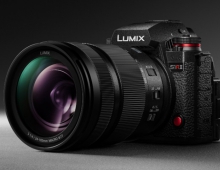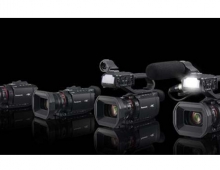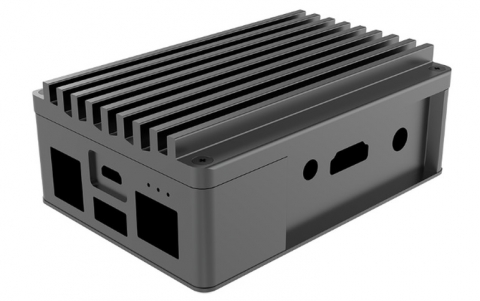
Panasonic Three-Wavelength Semiconductor Laser Simpilifies The Design Of Optical Pickup Units
Panasonic has developed a lateral hybrid three-wavelength semiconductor laser, which simplifies the optical system of an optical pickup by laterally arranging the laser emitting points of blue-violet, red and infrared semiconductor lasers.
Conventional three-wavelength semiconductor lasers combine three types of lasers - a red laser and an infrared laser vertically stacked on a larger blue-violet laser. As a result, their emitting points are arranged on a two-dimensional face, making the design of an optical pickup unit more complex.
 The emitting points of Panasonic's newly developed three-wavelength semiconductor laser (model number: LNCS01MR) are arranged at a single dimension, allowing for the minutarization of optical pickup units for Blu-ray Disc drives and players.
The emitting points of Panasonic's newly developed three-wavelength semiconductor laser (model number: LNCS01MR) are arranged at a single dimension, allowing for the minutarization of optical pickup units for Blu-ray Disc drives and players.
The basic advantage of Panasonic's lateral hybrid structure is that it allows the light-emitting points of a blue-violet laser and a two-wavelength (red and infrared) laser to be integrated laterally and at equal intervals, simplifying the design of optical pickups. Panasonic used junction-down assembly technologies for the blue-violet laser and highly accurate assembly technologies to allow the light-emitting points of the blue-violet and the two-wavelength lasers to be mounted laterally and at equal intervals (accuracy of the light-emitting point intervals: ±10 μm, approximately half in comparison with the conventional accuracy).
Pansonic claims that any required reduction in the efficiency of the the red and infrared lasers in order to prioritize the use of the third blu-laser is compensated by increasing the output of the two-wavelength lasers, ensuring sufficient media reproduction (20mW for red laser, 15mW for blue-violet laser and 15mW for infrared laser.) The technologies for increasing the output of two-wavelength lasers for playback provide a stable optical output, which has 3 times higher output power than that of the company's conventional products.
In addition, the adoption of a five-pin D-cut CAN package (diameter 5.6 mm) with high heat radiation enables the optical pickup to be thinned.
The three-wavelength semiconductor laser incorporates high density package design technology which allows the three lasers to be driven independently and the monitor photo diode to be built in, realizing both miniaturization and high heat radiation.
The company will release the new laser in September 2012 and plans to produce 300,000 units, depending on demand.
 The emitting points of Panasonic's newly developed three-wavelength semiconductor laser (model number: LNCS01MR) are arranged at a single dimension, allowing for the minutarization of optical pickup units for Blu-ray Disc drives and players.
The emitting points of Panasonic's newly developed three-wavelength semiconductor laser (model number: LNCS01MR) are arranged at a single dimension, allowing for the minutarization of optical pickup units for Blu-ray Disc drives and players.
The basic advantage of Panasonic's lateral hybrid structure is that it allows the light-emitting points of a blue-violet laser and a two-wavelength (red and infrared) laser to be integrated laterally and at equal intervals, simplifying the design of optical pickups. Panasonic used junction-down assembly technologies for the blue-violet laser and highly accurate assembly technologies to allow the light-emitting points of the blue-violet and the two-wavelength lasers to be mounted laterally and at equal intervals (accuracy of the light-emitting point intervals: ±10 μm, approximately half in comparison with the conventional accuracy).
Pansonic claims that any required reduction in the efficiency of the the red and infrared lasers in order to prioritize the use of the third blu-laser is compensated by increasing the output of the two-wavelength lasers, ensuring sufficient media reproduction (20mW for red laser, 15mW for blue-violet laser and 15mW for infrared laser.) The technologies for increasing the output of two-wavelength lasers for playback provide a stable optical output, which has 3 times higher output power than that of the company's conventional products.
In addition, the adoption of a five-pin D-cut CAN package (diameter 5.6 mm) with high heat radiation enables the optical pickup to be thinned.
The three-wavelength semiconductor laser incorporates high density package design technology which allows the three lasers to be driven independently and the monitor photo diode to be built in, realizing both miniaturization and high heat radiation.
The company will release the new laser in September 2012 and plans to produce 300,000 units, depending on demand.





















